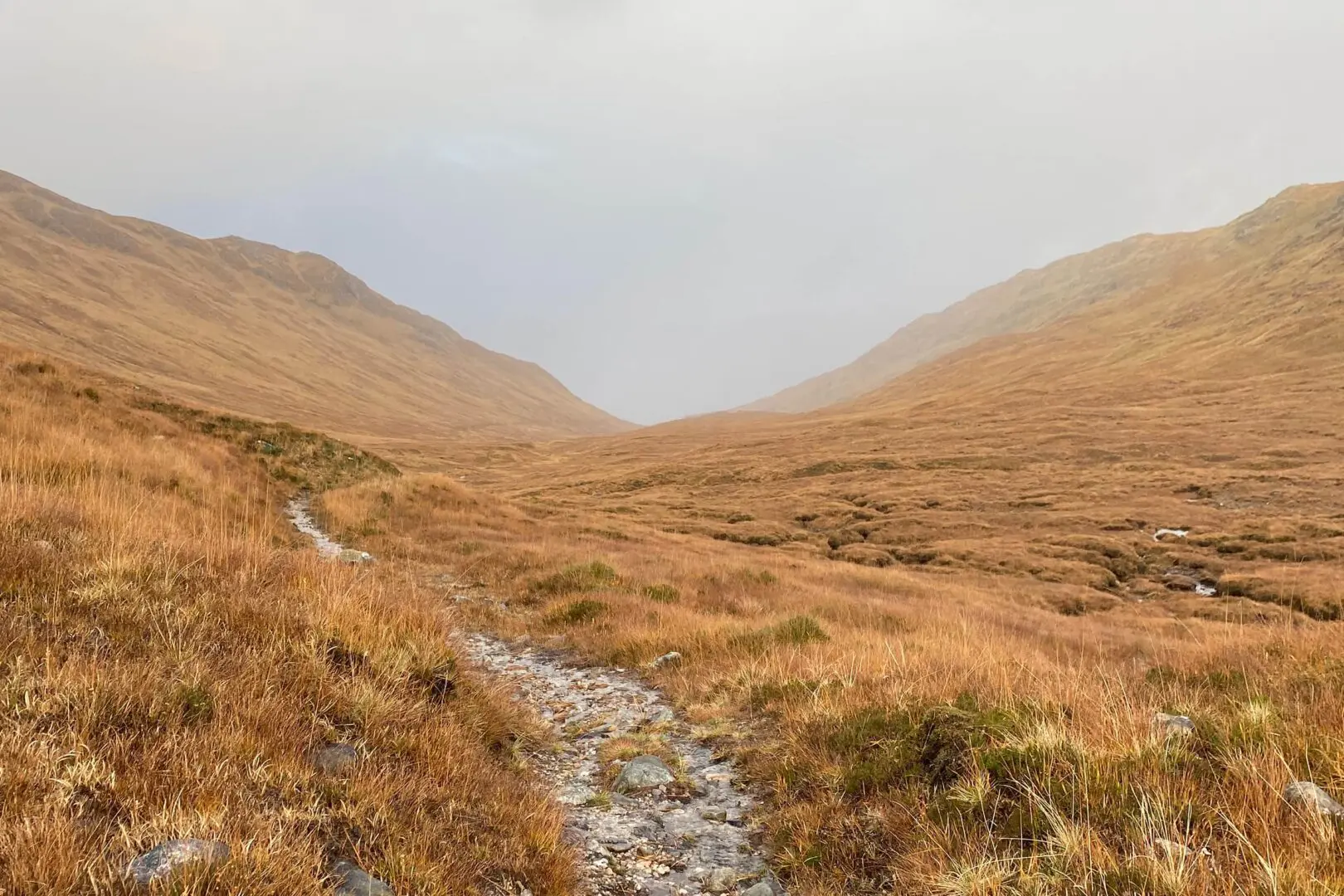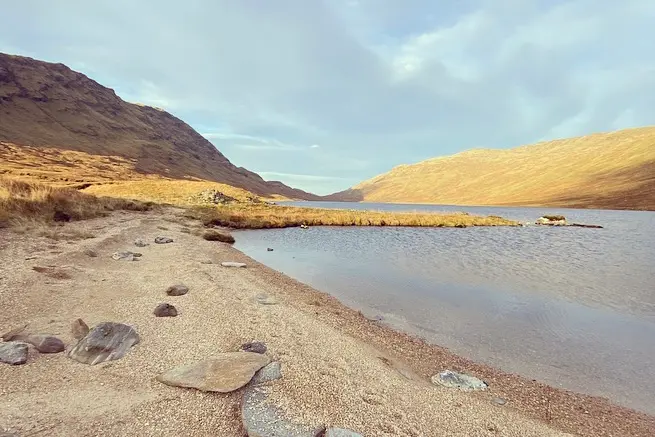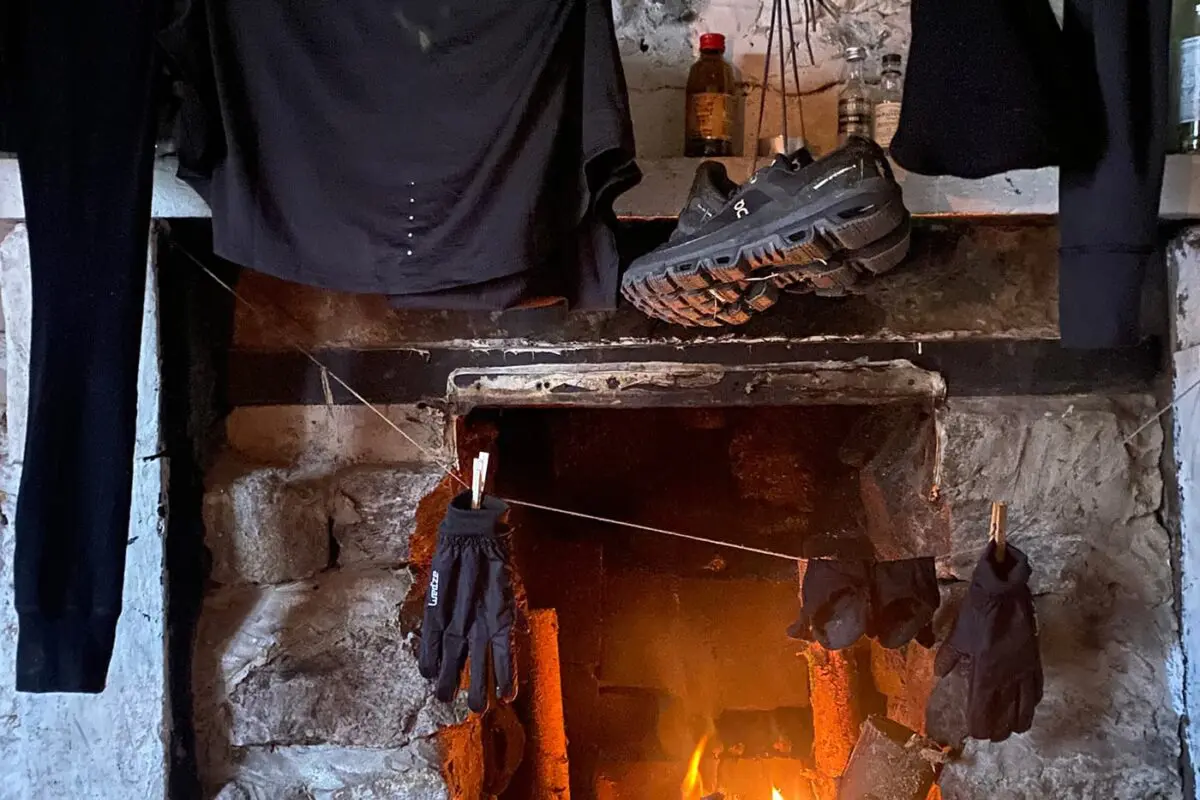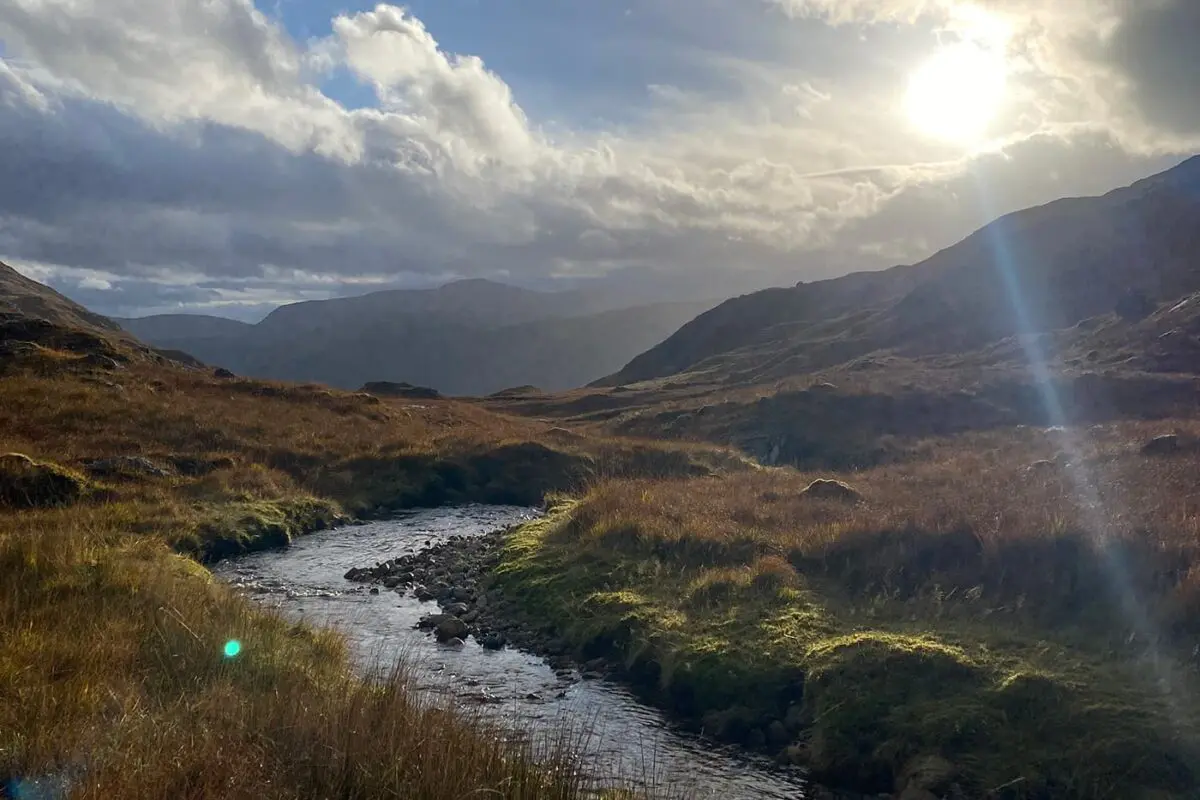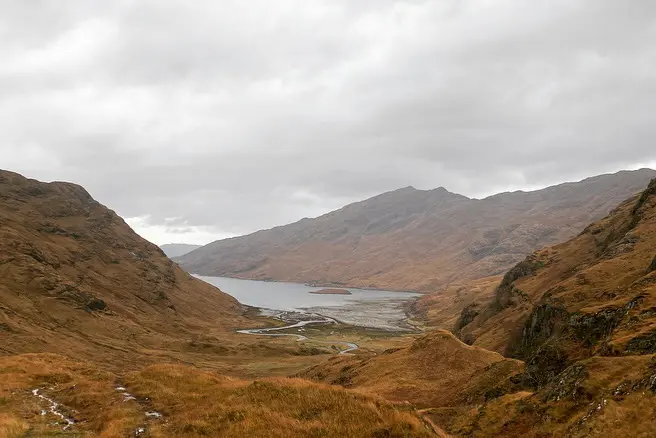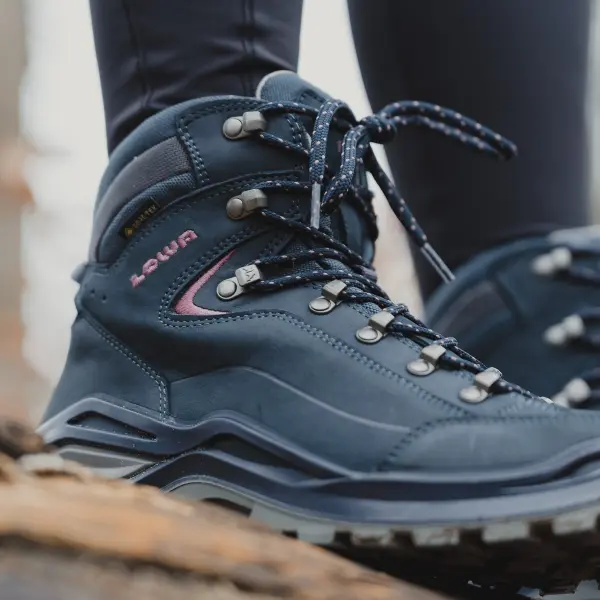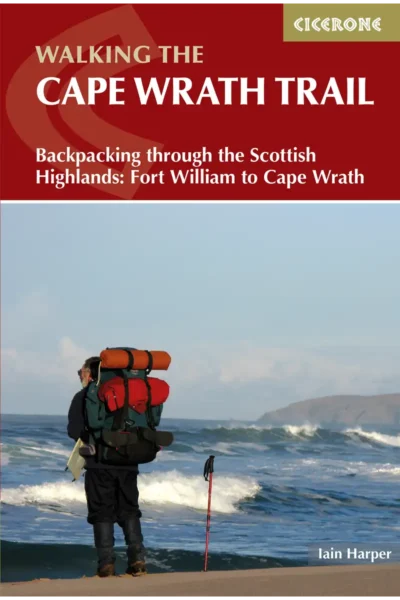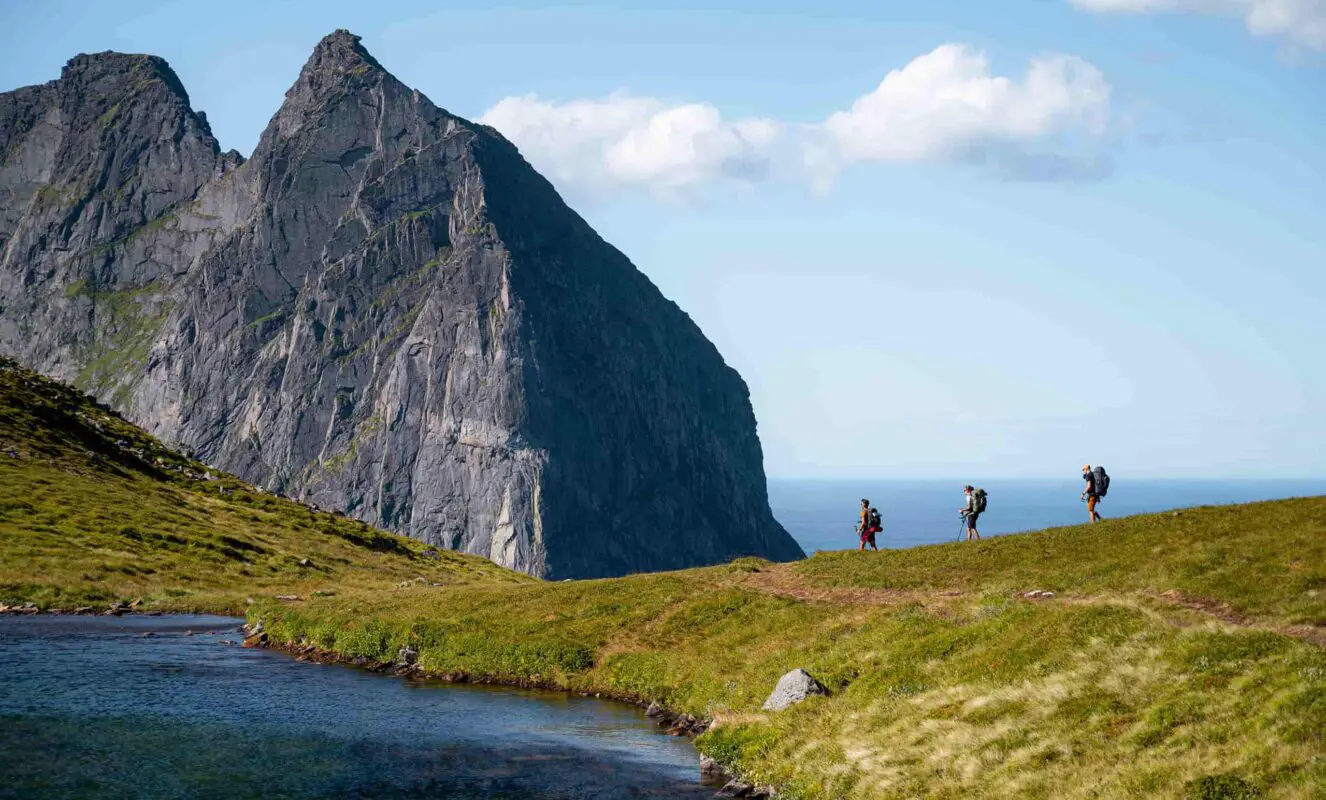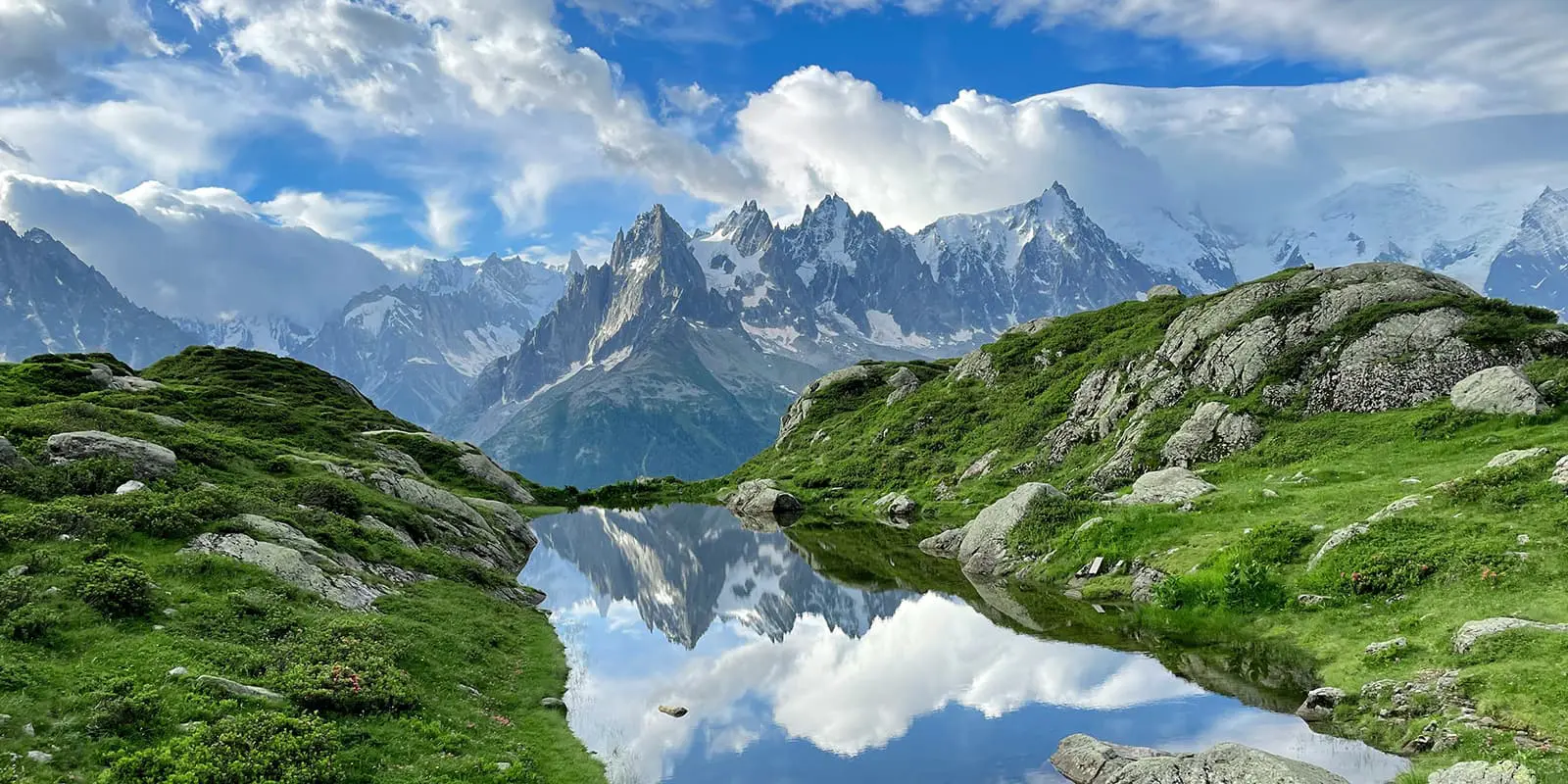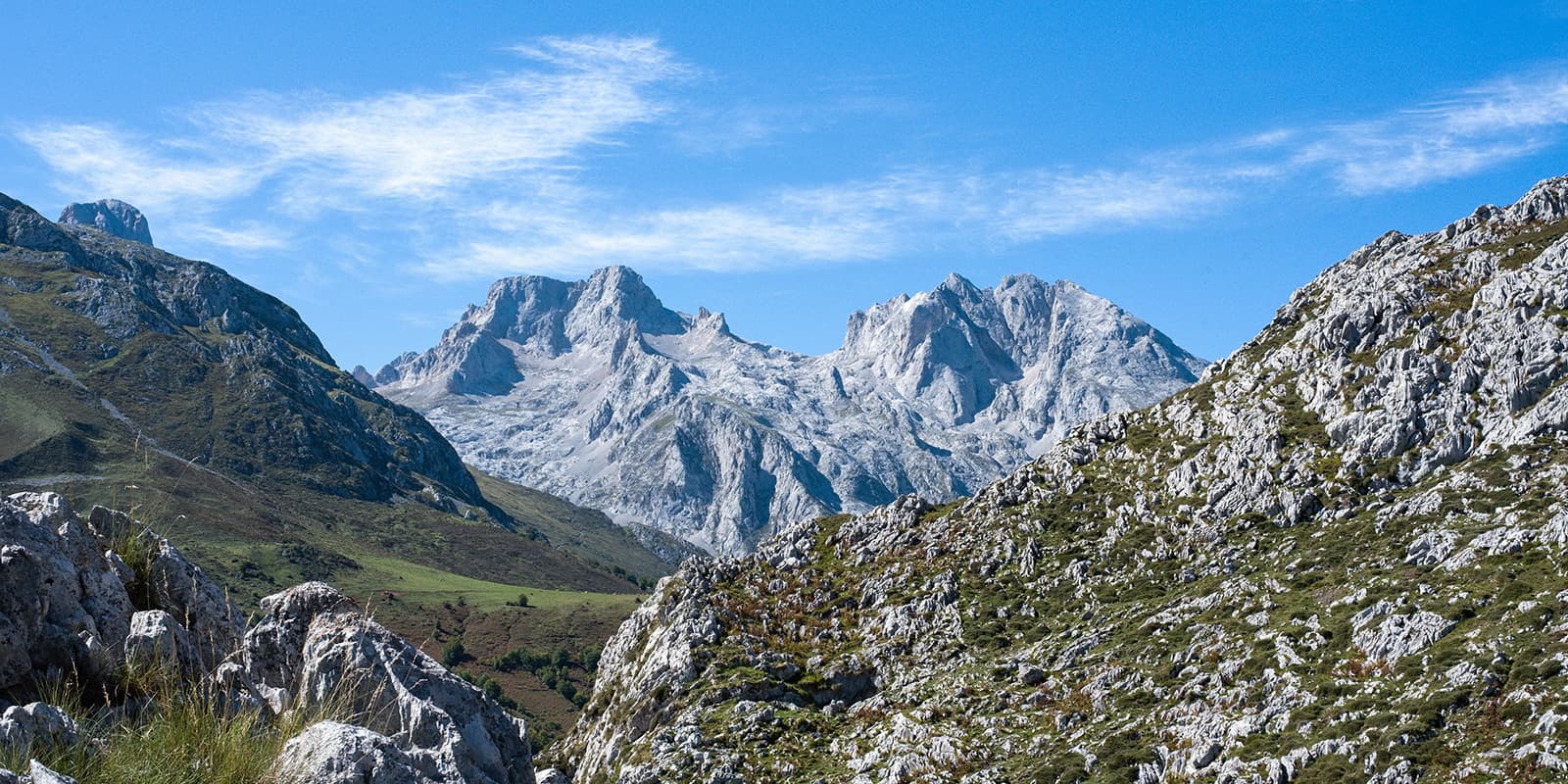The Cape Wrath Trail is an excellent long-distance trail but be prepared. This trail is not for beginners.
Beyond having the right gear to face the rough Scottish weather, a crucial element for tackling the Cape Wrath Trail is the ability to read and navigate by using a paper map. While GPX maps are available (check the link below), they won’t guide you through the boggy Highlands. There are mostly no established paths, and all you’ll know is that you need to reach the end of the valley and climb between two “hills” to get to the other side. Something visible on a map but challenging to follow blindly with an offline GPS, especially on a stormy day without visibility. Trust me; I’ve tried it.
But as a safety backup on your phone? Absolutely!
Another factor is the trail’s wide remoteness. There are sections where you find yourself alone in the wild Highlands for about five days until you reach the next small village. Keep in mind, that this also means being far from help, and finding an escape route requires more effort than usual. And yes, you have to carry some food! The only “bigger” city you’ll cross is Ullapool (which needs prior planning) with full accommodations. You’ll find small village shops in between, offering standard local food. The good thing about Scotland: water is everywhere! Some areas even allow you to carry none at all. BUT, please don’t forget your water filter!
Yet another challenge is the tricky river crossings—countless small, wide, deep, and wild ones. Some can be very dangerous, especially after rain. Not infrequently, you’ll have to follow a river until you find a safe spot to pass, sometimes for miles.
So, let’s say…
You’ll brave remote country, rugged terrain, Scottish wind, unrelenting rain, engage in your private war against the midges, find your way, fall into muddy holes, and feel like the most adventurous person on earth… It will be tough. But it will be an adventure that will stay with you for the rest of your life!



